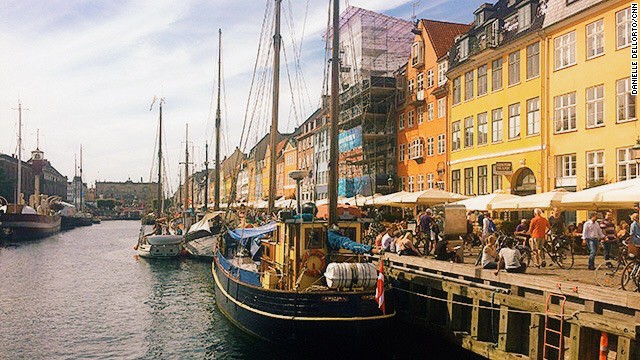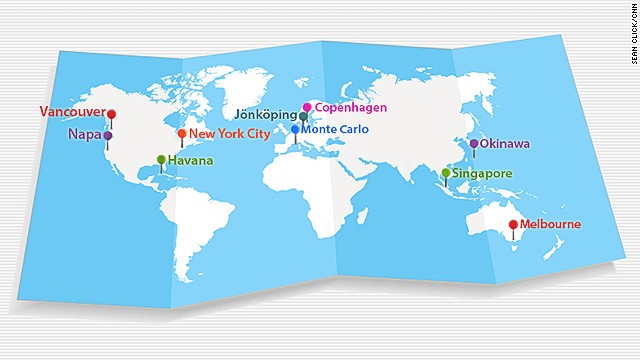
Where happiness is the truth
1 of 10
Copenhagen is a bustling city full of ambitious professionals and young families. Yet working long hours here is frowned upon.
Just 2% of employees in Copenhagen work 40 hours a week or more, according to an OECD report, freeing them up to spend time with family, join organized sports, volunteer or participate in other community programs.
The cost to participate in those programs, which range from laughter yoga in the park to basket weaving? Free. This helps encourage residents to get involved.
Their ability to balance work with quality time with friends and family not only keeps their stress levels down, it gives them a happiness boost. Studies show that people who focus on experiences versus things have higher levels of satisfaction long after the moment has passed. That’s one reason Denmark takes the top spot as the happiest nation in the annual World Happiness Reportcommissioned by the United Nations.
Other things play into Copenhagen's relaxed atmosphere. Residents walk to restaurants and walk to get groceries. There are outdoor food markets with fresh produce and vegetables within a few blocks of most spots in the city.
Men cycle to work in their slim-fit suits, and women don’t shy away from pairing a bike helmet with their sundresses and wedge heels. The city has 249 miles of bike paths, which makes biking an easy and safe option. And people use them: Nearly half of commuters in Copenhagen travel to work or school by bike each day.
Though parks and bike paths are plentiful, the government is upping its efforts. By 2015, all residents must be able to reach a park or beach by foot in less than 15 minutes, according to a new official municipal policy. Many of the new parks created will be “pocket parks,” or small green spaces for city residents. The hope is that they will help keep residents fit and help the environment by reducing traffic and pollution.
Here’s one more stat that may make you want to start packing your bags for Denmark: Ninety-six percent of residents in Copenhagen say they can count on someone if they are in need.
This supportive society is just another reason Copenhagen earns a spot as one of the healthiest (and happiest) cities.
The 10 cities: Copenhagen, Okinawa, Monte Carlo, Vancouver, Melbourne, New York, Jonkoping, Havana, Singapore, Napa
http://edition.cnn.com/interactive/2014/09/health/cnn10-healthiest-cities/?sr=fb090614HealthiestCities12pStoryLink
http://edition.cnn.com/interactive/2014/09/health/cnn10-healthiest-cities/?sr=fb090614HealthiestCities12pStoryLink

Introduction
Our health is not just a byproduct of how we live. It’s also about where we live. Just ask the residents of these 10 cities.
A truly healthy city makes it easy for residents to adopt a healthful lifestyle, whether it’s by providing quality health care, encouraging preventive medicine or reducing air pollution. These cities top our list because they shine in one or more areas of good health.
The leaders of these cities have implemented laws and policies that ensure locals have access to parks, nutritious food and public transportation. They’ve created innovative programs to combat disease and increased the quality of life for residents long into old age.
But of course, good health isn’t just up to the government. Citizen engagement is also crucial when it comes to creating a healthy community.
In response to a query from CNN iReport, residents of Napa, California, and other cities around the globe told us how their city inspires good health and why they strive to make wellness a priority. From line dancing to surfing rivers to life-size games of chess, they show us that staying active doesn’t have to be a chore.
So take a quick trip around the globe with The CNN 10 and pick up a tip or two from these healthy cities. Your body and mind will thank you.

댓글 없음:
댓글 쓰기
참고: 블로그의 회원만 댓글을 작성할 수 있습니다.